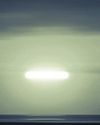We’ve 3D-printed plastic, metals, and wood fiber. And now that same technology is being used to make chocolates and pizza. Unlike with most other food, how printed meals taste isn’t the real point. It’s what they can do.

Hod Lipson’s laboratory at Columbia University is a place designed to nurture the human instinct to tinker. The space itself is pretty basic: linoleum floor, white walls, natural wood tables. Wires, markers, textbooks, and glue bottles cover most surfaces—the detritus of students designing, making, refining, and tweaking. Robotic models line the shelves: a robot with foot-long plastic wings that look like a housefly’s, miniature machines with exposed silver gears, geometric robotic skeletons. There are laser cutters and microscopes and welding masks hung on hooks. Pushed up against a wall, a robotic arm bears a paper sign: “DANGER. Robot moves without warning. KEEP AWAY.”
Lipson became a professor of mechanical engineering at Columbia in 2015, after fourteen years as a professor at Cornell University. He is a pioneer in the field of three-dimensional printing, and one of the first to experiment with substituting the usual raw materials—plastics, metals—with edible food products. It was in Lipson’s lab about ten years ago that a few of his students had the idea to mess around with it. Somebody tried filling a printer syringe with frosting. Then cheese, chocolate, and other foods. “In the beginning we thought it was frivolous,” Lipson says. “We’d say ‘Look, we printed with chocolate, but let’s get serious and do our battery work.’”
But when writers at The New York Times and the BBC started inquiring about the technology, Lipson saw public interest that he hadn’t anticipated. People who “couldn’t care less about batteries or robotics” suddenly cared about 3D printing when food got involved, he says. Everybody cares about food. A new branch of 3D printing began.
This story is from the December/January 2017 edition of Popular Mechanics.
Start your 7-day Magzter GOLD free trial to access thousands of curated premium stories, and 9,000+ magazines and newspapers.
Already a subscriber ? Sign In
This story is from the December/January 2017 edition of Popular Mechanics.
Start your 7-day Magzter GOLD free trial to access thousands of curated premium stories, and 9,000+ magazines and newspapers.
Already a subscriber? Sign In

Underwater UFOs - A retired U.S. Navy admiral believes that the government should look to the oceans to help solve a mystery in the skies.
A retired U.S. Navy admiral believes that the government should look to the oceans to help solve a mystery in the skies. Rear Admiral Timothy Gallaudet, former Oceanographer of the U.S. Navy, recently published a paper arguing that unidentified anomalous phenomena (UAP, more commonly referred to as UFO) and unidentified submersible objects (USO) are linked, and should be studied further.

Synching Up Our Circadian Rhythms - If you've ever done any kind of long-distance travel, or just woken up feeling under-rested thanks to daylight saving time, you know how important your circadian clock is.
If you've ever done any kind of long-distance travel, or just woken up feeling under-rested thanks to daylight saving time, you know how important your circadian clock is. Like many things in your body, your circadian rhythm is more complicated than it might seem on the surface. Rather than being entirely brain-based, it's actually controlled by a collection of several circadian clocks (central and peripheral) that all work together to keep your gears turning like a well-oiled machine.

SKINWALKER RANCH REVEALED
The 512-acre ranch has captivated real-estate tycoons, TV producers, and the U.S. government. What are they searching for?

Upgrade Your Living Room With This DIY - MID-CENTURY COFFEE TABLE
This project is easy to build and customize to fit your space.

CHASING AN ASTEROID
HOW NASA DEFIED INCREDIBLE ODDS TO GET ITS ASTEROIDHUNTING OSIRIS-REX MISSION OFF THE GROUND AND IN THE PROCESS UPENDED WHAT WE KNOW ABOUT OUR SOLAR SYSTEM.

INDISPENSABLE LESSONS FROM A POP MECH LEGEND
With people moving around so much these days, it's perfectly natural to wonder how an editor can just come along and stick like a barnacle to the hull of Popular Mechanics, lasting for 35 years.

SAVING THE SUGAR BUSH
A technological revolution has transformed the ancient tradition of sugar making-with big implications for local economies and ecosystems imperiled by climate change.

Whether We Live in a Simulation
IN THE 1999 FILM THE MATRIX, NEO DISCOVERS A truth to end all truths-the universe is a simulation. While this premise provides fantastic sci-fi fodder, the idea isn't quite as relegated to the fiction section as one might expect.

MANIPULATION AND MEDICAL ETHICS
The taking of cervical samples wasn't the only medical procedure of dubious consent in Lacks's story.

Henrietta Lacks
IT'S NOT SURPRISING THAT Henrietta Lacks-whose \"immortal\" HeLa cells were pivotal in developing treatments for diseases such as polio, HIV/AIDS, and COVID19-is referred to as \"the mother of modern medicine.\"